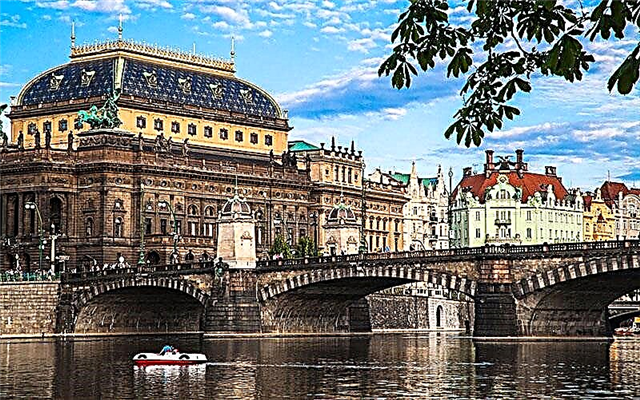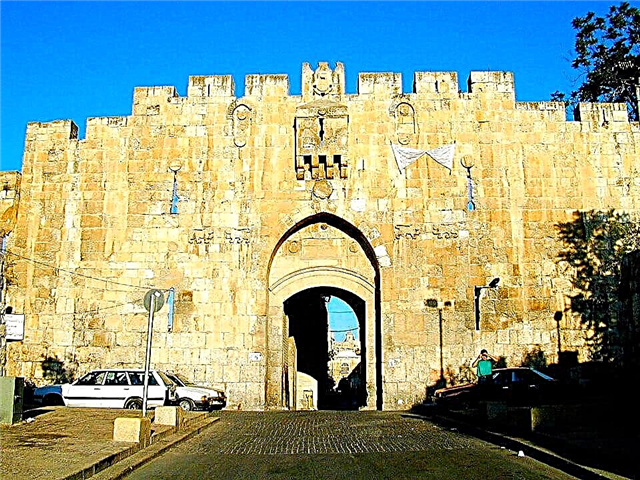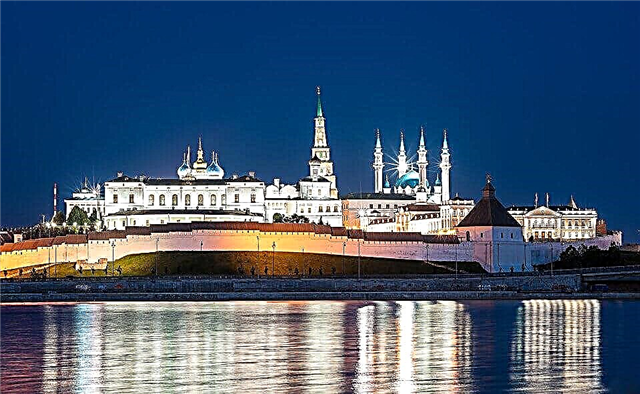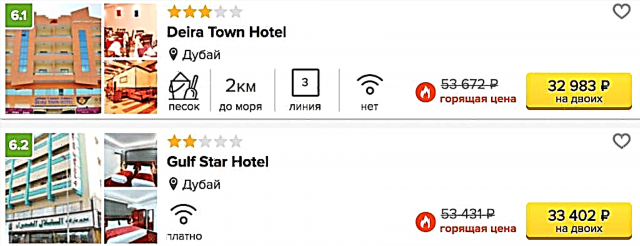The history of the Svyato-Vvedenskaya monastery began in March 1991, but it was not created from scratch. From the beginning of the 20th century, there was already a temple in the city, which was called the Red Church for the color of the walls. It was he who became the center of the new monastery. Among other monasteries, Vvedenskaya is distinguished by active social service. The nuns visit prisoners in prisons and colonies, help disabled people, orphans, as well as people suffering from drug addiction and AIDS.
History of the Vvedenskaya Church
In 1900, a gathering of the peasants of Ushakovo and Yama took place, and they decided to build a new church in the township part of the city. The plot for the church was allocated by order of Count Sergei Dmitrievich Sheremetyev, and it was decided to collect funds for it with the help of private donations. A construction commission from peasants took up the collection of money, the manager of the patrimonial office of the Sheremetyevs K.F. Knorre, as well as Pavel Nikanorovich Derbenev - the mayor of the then Ivanovo-Voznesensk.

Holy Vedensky monastery in urban development
Derbenev belonged to a wealthy family of owners of the textile industry, and his grandfather, Timofey Vasilyevich, organized the first weaving workshop back in the 30s of the 19th century. By the efforts of the Derbenev family, by the beginning of the 20th century, their manufacturing production in Ivanovo-Voznesensk had grown greatly, and almost 6.5 thousand people worked at textile factories. In addition to the mayor, the honor of sponsoring the construction belongs to local manufacturers I.K. Marakushev, N.G. and N.Kh. Burylin, I.A. Sokolov, M.N. Garelin and P.I. Vitovoy. City officials, factory workers, and anonymous donors also donated money for the temple.

General view of the Svyato-Vedensky monastery
The project of the new church was carried out by Peter Gustavovich Begen, a provincial architect who built many buildings in the Vladimir province and in Ivanovo-Voznesensk itself. Finally, in 1901, the solemn laying of the temple took place, and construction work began, the direct management of which was entrusted to the architect Alexei Fedorovich Snurilov.
Six years later, the temple was consecrated. With money donated by the industrialists Burylins, in the art workshop of A.I. Shorokhov, a beautiful three-tiered iconostasis was carved for the new church. A wooden bell tower was erected from the south-west of the main building.

View of the Holy Vedensky Monastery from Sheremetevsky Avenue
The church was equipped with three chapels. The central one was dedicated to the Introduction to the Temple of the Mother of God, and the lateral ones - to St. Nicholas and the Great Martyr Theodore Tiron. The new temple turned out to be very beautiful, and its floor, which was covered with multi-colored metlakh tiles, was especially impressive. It is known from the church chronicle that Mikhail Stepanovich Kokhomsky became the first priest of the temple.
The Vvedenskaya church stood on a poor, working-class outskirts of the city, and its parish community constantly had problems with funds. Due to the lack of finances, the church did not paint, and the parishioners bought the liturgical utensils and the necessary building materials on credit.

View of the Holy Vedensky Monastery from Spartak Street
In 1914, the community received permission from the church authorities and began to look for funds to build a stone bell tower. Two years later, the staff architect of the diocese, L.M. Scherer created her project. However, the authorities considered that the site was not chosen well, and the bell tower was never built.
In 1918, Patriarch Tikhon (Bellavin) visited the Vvedenskaya Church and held a service here. By the mid-30s of the last century, the authorities transferred to the branches of the Renovationist Church, first one of the limits, and then the entire temple. But in 1938 the church was closed, and its interior decoration and icons were looted.

View of the monastery bell tower against the background of the Church of the Presentation of the Most Holy Theotokos in the Temple
In the middle of the Great Patriotic War, at the initiative of the townspeople, attempts were made to resume services, but this was never done. For more than 50 years, the temple, as a religious building, was inactive and was used for the regional state archive. Church services have only been held here since 1990.
The history of the monastery
Archimandrite Ambrose (Yurasov) became the founder and spiritual leader of the monastery. In 1990, he was appointed rector of the Vvedensky Church returned to believers. A year later, the parish of this church was converted into a convent by the order of the patriarch.

View of the Staircase Tower and the Cell Building
For several years, members of the parish community and volunteers had to restore the Vvedensky Church, build new cells and equip the monastery territory. They dismantled the ceilings made in the church during the years of the archive's existence, removed old shelves and rubbish from buildings, and installed crosses on domes. It took a lot of time to create two new carved iconostases and paint icons for them.
Today the Vvedenskaya monastery is distinguished by active missionary activity. Charitable dinners are organized at the monastery for the poor citizens. The monastery is actively involved in publishing - it publishes the newspaper "Word of Consolation", publishes Orthodox books and booklets. In addition, everyone can get the necessary advice by calling the helpline set up in the monastery.

View of the domes of the Vvedenskaya Church
Architectural monuments on the territory of the monastery
The modern monastic ensemble is distinguished by the integrity of the architectural solution. It was built in the Russian style, but has some elements of eclecticism. The front masonry of all its buildings is made of red brick, which determined the unofficial name of the monastery - the Red Church.
The architectural dominant of the entire complex is the pillarless five-domed Vvedensky temple, which stands right in the center of the fenced-in monastery territory. It is an architectural monument of the early XX century. The main volume of this church is a double-height cube with semicircular altar apses. The inner space of the temple is a well-lit spacious hall.

Entrance to the Vvedensky temple
The church roof is crowned with five massive, slightly flattened onion domes. Its entrances are decorated with arched openings. The windows on the facades are also decorated with arches. In addition, the temple is richly decorated with columns, beads, kokoshniks, decorative toothed belts and multi-stage cornices of various sizes and shapes, in which motives of Byzantine architecture are used.
In addition to the temple, the monastery houses a parable house, which was built in the eastern part of the site in 1909. This house looks very original. It is a two-storey building, set at an angle, and vaguely resembles the boyar chambers of the 17th century. A round tower is attached to the rounded corner ledge, with a picturesque top in the form of a tent, and inside it there is a staircase. The rectangular windows of the house are decorated with platbands and other elements, repeating the decor of the Vvedensky temple.

Wall painting in the Vvedensky temple
The monastery fence was built in 1912. It consisted of brick pillars and forged metal gratings between them. It is interesting that the gratings in different parts of the fence had a different pattern. On three sides, richly decorated gates were installed in the fence, and on two corners there were turrets, which were in harmony with the tower of the building.
When the creation of a new monastery began in the 1990s, the support posts of the fence were built into the walls of the new monastic buildings, and the bars were removed. At the same time, a low bell tower with a belfry appeared over the western gate, which was built according to the project of the architect I.K. Rusakomsky.

Chapel of Ambrose of Mediolan
Current state and visiting regime
The Vvedenskaya monastery is an active nunnery, inside which everyone can get. A pilgrimage service was established there and a museum of the Ivanovo New Martyrs was opened. In the main territory and in the farmsteads (in the Preobrazhensky and Pokrovsky sketes, as well as in the Sergiev Hermitage), 170 inhabitants live permanently. The monastery church contains the miraculous icon of the Mother of God "The Hearted One", reliquaries with particles of the relics of Christian saints, as well as a cassock that belonged to John of Kronstadt.
How to get there

View of the Priesthood Building and the Southwest Tower from the monastery grounds
The monastery is located in the center of Ivanovo, on the street. Basic, 23. Its territory is located 1 km from the railway station - one stop of public transport.
By car. On the M7 highway from the capital to Ivanovo can be reached in 4.5-5 hours (290 km). From the southern outskirts of the city to the monastery, the road takes about 15 minutes and runs along the streets of Lezhnevskaya, Bubnova, Sadovaya and Sheremetyevsky prospect.

Church of the Presentation of the Most Holy Theotokos in the Temple
By train or bus. From the Yaroslavsky railway station in Moscow to Ivanovo, the train reaches in 7 hours. The railway station is located in the central part of Ivanovo. In addition, it takes 6 hours to get from the Central Bus Station in Moscow near the Shchelkovskaya metro station to Ivanovo by direct or transit buses. The bus station in Ivanovo is located in the southern part of the city and is 6.5 km away from the railway station. Buses No. 12, 14, 15/4, 20, 32, 120, 129, trolleybuses No. 2, 6, 9, 11 and shuttle buses No. 18, 129, 135, 144 (stop "Svyato-Vvedensky Monastery "). From the railway station to the monastery in 15 minutes you can walk or take a taxi.
Attraction rating:











